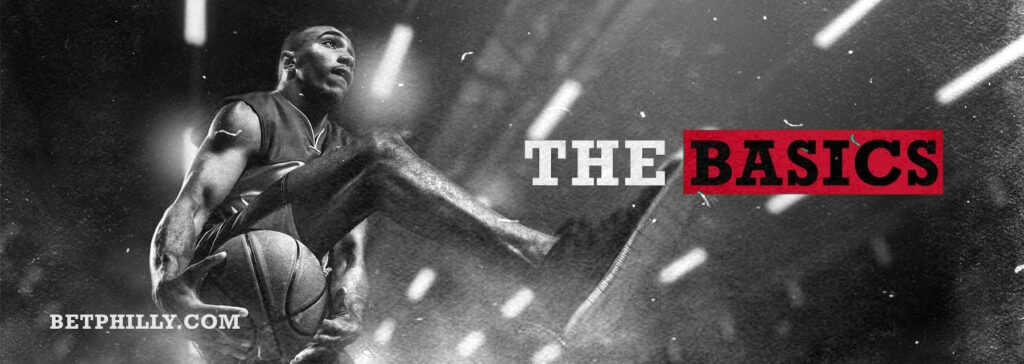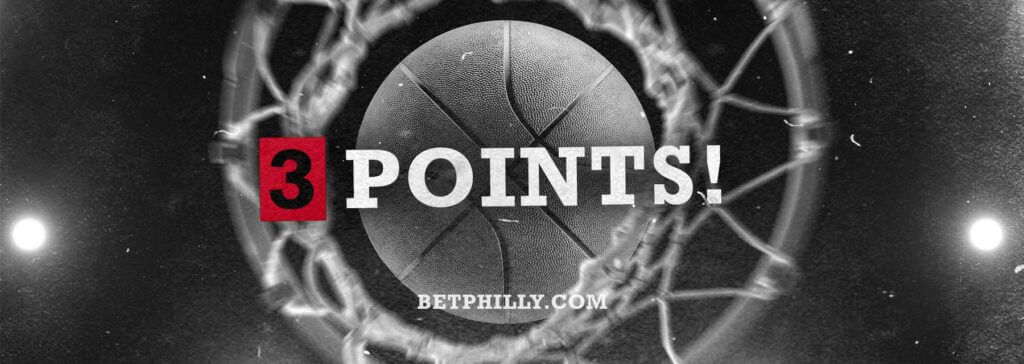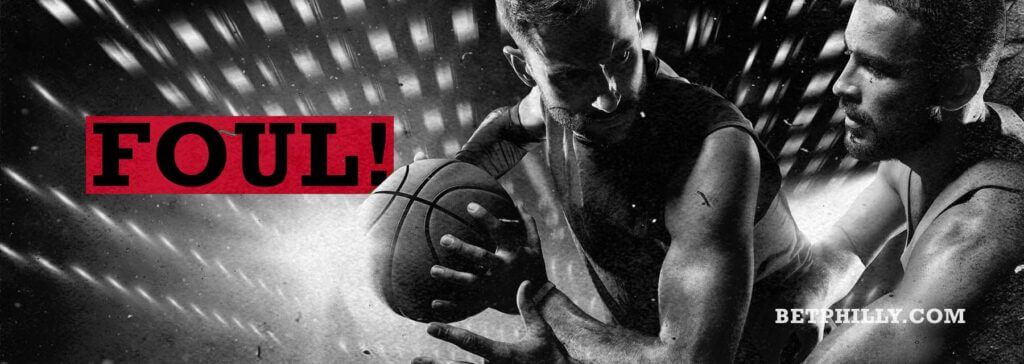Basic NBA Rules
Basketball is pretty much the same across the world; the basic gameplay anyway. The NBA is a professional body and has a few twists and turns in its rules for the level of play that it hosts. We have a look below at what these are.

To know and understand the rules in NBA is essential to be able to make good and balanced bets. If you don’t know the rules, you risk making more bad decisions when betting on NBA.
Game Objective
The primary objective of any basketball match is to get the most points. Your NBA team gets points by shooting the ball into the basket. The team with the most amount of points wins the game. Players dribble the ball with one hand as they run or pass. They aren’t allowed to run with the ball when catching a pass, these are some of the NBA rules.
NBA Court
The court, according to the NBA, needs to be a standard size. The length of the court on the inside should be 94 feet and the width 50 feet. There is a free throw lane at each end of the court. The free-throw line must be drawn across each of the circles.
In the middle of the court is a center circle from where the game begins. On the opposite sides of the court are two baskets with hoops where players score the goals.
Player Roles
Basketball players usually fall into one of five positions. They can play point guard, small forward, shooting guard, power forward, or center. A point guard acts as the on-court coach by setting up plays. The small forward can be known as the third.
This position requires the player to score points, defend, and often act as secondary or tertiary rebounders behind the center and power forward.
The shooting guard is precisely what it says; it’s the team’s best shooter, and their main aim is to get the ball in the hoop. The power forward, also known as the fourth, is a strong offense position whose primary skill is rebounding.
The tallest person on the team holds the center position. The center defends the rim on the one end, and on the other is a constant threat beneath it.
Scoring
To score a legal goal, the ball from the playing area must go through the hoop from above and successfully pass through the net. In a standard game, a shot made from within the three-point line is worth two points, and when made from outside the line, it’s worth three points.

In the NBA, successful free throws are worth one point. If a player scores a goal into the opponent’s hoop by accident, the goal will go to the opposing team.
Player and Team NBA Rules
There are player and team rules in the NBA. A captain and a co-captain may be appointed for the teams. The captain can be anyone who is in uniform and on the active list, except a player-coach. The captain is the only player allowed to ask an official about a rule interpretation during a timeout.
He can’t, however, discuss a judgment decision. Each player must have a jersey or shirt with a number on the front and the back for easy identification. The teams consist of five players per side, and no team can go below five players.
If the group is down to four due to circumstances such as injuries, then they are allowed to return an ejected player to the court to complete the game. It would be the latest player that was disqualified by reason of receiving six personal fouls.
Coach Rules
The coach can be on or off the bench. He can direct from the subs box line to the baseline but isn’t permitted to cross the midcourt. This is a strict rule, and violators are assessed on a technical foul for being unsportsmanlike.
If there are trainers or assistants, they must remain on the bench. No trainers or coaches are allowed to go to the scorer’s table for any reason whatsoever during the game.
Time Limits and Game Duration
The total regulation gameplay time is 48 minutes. Regulation play as per NBA rules is twelve minutes per quarter, with overtime periods of play being five minutes. Teams take a fifteen-minute break between halves of matches.
If the games are live on national TV, 3:30 will be allowed between the first and second half. Teams have 30 seconds to replace a player who has been disqualified. An operator announces when two minutes are remaining in each period. Each period ends when the allocated time expires.
NBA Overtime Rules
The reason that a match would go into overtime is if the teams are tied. These NBA rules are the same for male and female matches. However, it differs depending on if its regular season or the NBA playoffs.
Regular Season Overtime Rules
If overtime occurs, all periods of play will be five minutes. If the score ties at the end of the fourth period, the game shall go on. It continues in 2:30 without a change of baskets for the OT duration. Each of the teams will be allowed two team timeouts in overtime periods.
Overtime Rules for the NBA Playoffs
The overtime rules for playoffs are basically the same as regular-season NBA rules. If the score is tied, the game carries on in intervals of five minutes until a winner emerges. If the score is still tied after an OT session, this process repeats. There have been as many as six overtime periods to determine the winner.
Sports Betting Notes for NBA Overtimes
If you’re betting on an NBA match, it’s good to keep in mind that you can bet on them going to overtime. Your standard bet might also be affected by a team winning in the OT period, or within the regular period. Over the past few seasons, there have been between 70 and 80 games out of 1230 that went into overtime.
NBA play in tournament rules
One thing in NBA that many think is a bit complicated is the NBA play-in tournament rules. When the regular season is over, the play in starts for the teams which ended at the 7th to 10th place in the league. This applies for both the Western and Easter conference.
This means that the total number of teams in NBA that enters the NBA play in are 8 total. Here comes a detailed explanation on how the NBA play in tournament rules work.
The four teams from each conference that ends place 7 to 10 will meet each other in the first tournament game. A total of tree games for each conference is played:
- Game 1: 7th place vs 8th place – The winner gets a place in the main tournament and will meet the second best team from the league in the first main elimination bracket game.
- Game 2: 9th place vs 10th place – The winner here get to meet the looser in Game 1
- Game 3: The looser from Game 1 will meet the winner from Game 2. The winner in this game also gets a place in the main tournament and will there meet the 1st placed team from the regular season.
This type of tournament structure seems a bit to complicated, but it has been working pretty good since first implemented. Today most of the fans are familiar with these NBA play in rules.
Fouls and Violations
Basketball is notorious for fouls and emotional outbursts. Players are often told to leave the court for a variety of reasons. Most fouls occur as a result of illegal contact with an opponent, or for unsportsmanlike behavior.

If a team’s player commits a foul, they lose possession of the ball. The opposing team will often get a free throw. Some common fouls include pushing, hitting, holding, and slapping. Violations are related to the court or the ball, and there aren’t any free throws awarded. Some common violations are walking, time violations, carrying, and double dribble, to name a few.
Some of the fouls for a team could include:
- Conduct
- Fines
- Delay-of-Game
- Number of Players
- Basket Ring, Backboard or Support
- Fighting Fouls
- Excessive Timeouts
The players can also incur personal fouls, which could result in the other team getting awarded free shots. If the player continues, he might be disqualified. See personal fouls are:
- Free Throw Penalty Situations By Dribbler
- By Screening
- Away-From-The-Play Foul
- Flagrant Foul
- Punching Fouls
- Double Fouls
- Offensive Fouls
- Loose Ball Fouls
After the sixth personal foul, the player is disqualified, and the team goes under assessment for a technical foul. All further fouls get the same treatment, as will any other players that commit a foul during the game.
Equipment
There isn’t much equipment required to play basketball. A net, backboard, and a ball are all that’s needed. The ball, according to NBA rules, needs to be officially approved. It must have between 7.5 and 8.5 pounds of pressure. For the pre-game warmup, a minimum of nine balls must be made available to each team.
The backboards must have LED lights, which are synchronized with the game clock. The lights need to be red and laid out in four strips. These red lights outline the four sides of the backboard to show the expiration of time. It must also have an amber LED light to indicate the end of the shot clock.
Referee and Procedures
The referee’s duties are to ensure that matches are safe and fair. The referee is there to enforce the rules of the game, and will make numerous decisions. Some of the decisions include deciding when a foul or violation occurs, and then stopping to issue any appropriate penalties.
The referee, along with the other officials, inspects and approves all equipment before the game. This includes balls, baskets, courts, backboards, timers, and scorers equipment. The referee and other officials will also decide on any point not explicitly covered by the rules.
On a lighter note, years ago when basketball first started, the hoop had a bottom. Every time that a team scored it was the duty of the referee to climb up a ladder and get the ball back to the court. We’re sure officials are happy this is no longer the way the NBA operates.
Player Trading Rules
Each season teams are allowed to trade player’s contracts, draft choices, or draft rights to a player. Teams can trade between the beginning of the regular season up to the NBA’s deadline, which is at 3 pm on the 17th Thursday of the season.
A team can sign a contract with one of its players and, at the same time, trade that player; this is called a sign-and-trade.
Teams can also take advantage of an extension-and-trade agreement under certain conditions. The deal is allowed if the contract doesn’t cover more than three seasons, and the annual salary increase is no more than 5% of the salary in the first season covered by the extended team.
The player’s pay package in the first year of the extended term isn’t more than 105% of the last year’s original salary. Instead of trading players, teams can also include cash in the transactions. Once a team trades a player, it can’t get the player back within the same season.
NBA New Rules
There have been some exciting changes coming into effect for basketball regarding new NBA rules. The first is one that coaches are sure to use often; they’re now allowed to challenge one call from an official during a game.
They must call a timeout to proceed with the challenge. If they win the challenge, the team will receive the timeout back. This is very good to know about if you have placed a bet on the game, since the live odds can change quickly
A new rule is that NBA coaches need to submit the starting lineups at least thirty minutes before tipoff. It’s a plus for anyone betting on the game who wants to know the list before placing a bet. Stricter rules for tampering have been introduced, with fines up to $10 million for violating the tampering rules. On top of that, executives could face suspension, and contracts could be voided.